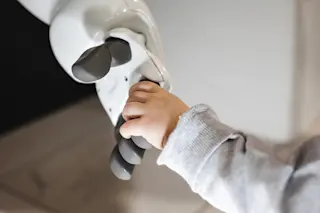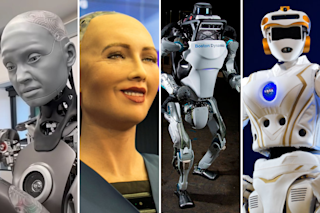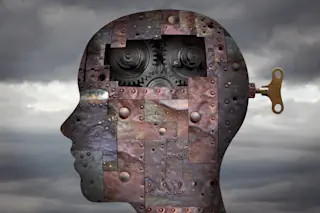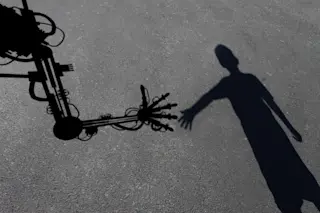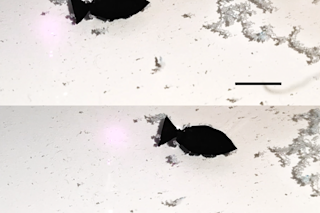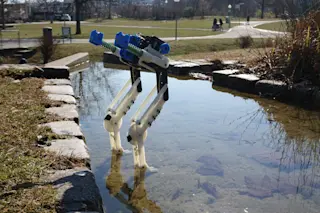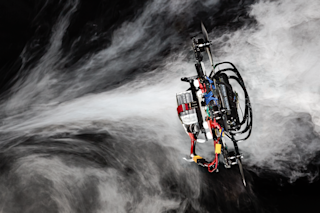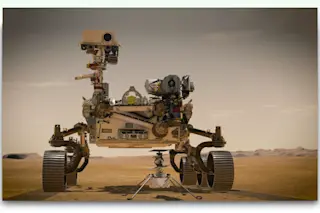Like a turn-of-the-century hunter returning from safari, Frank Mezzatesta stands next to a huge wooden crate he gleefully says contains something wild, a beast never before known to man. And he can hardly wait to show it off. With the click of a mouse, the front of the crate crashes to the floor, revealing an enormous metal monster 13 feet tall, 18 feet long, and weighing 11,000 pounds— the basic statistics of a loaded delivery truck. The creature seems to hesitate for a moment, then moves forward. With deliberate but surprisingly lithe steps, it strides across the floor, shifting its weight with the grace of a cat as it lifts each foot in turn. Nearing a small group of people, it leans toward them, then sways from side to side as if trying to decide whether to charge them, eat them, or ignore them. "At this point in a previous ...
More on Discover
Stay Curious
SubscribeTo The Magazine
Save up to 40% off the cover price when you subscribe to Discover magazine.
Subscribe


